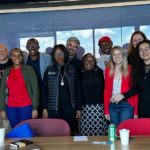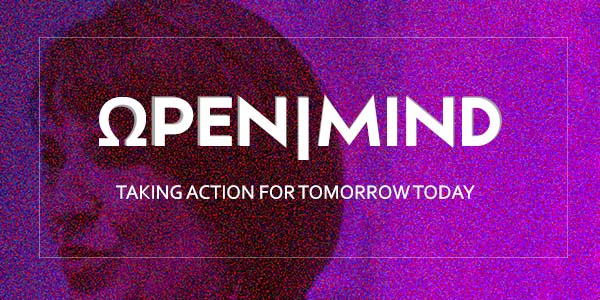What will win the day in tech-based corporate innovation?
It’s time to look at a new role for R&D that integrates the technical team and technologists into the design of the business model and go-to-market expansion. The role requires a new mindset.
If you were to place a bet on the commercial success of a new technology, which would be the key driver you’d pick as the most important:
- The best technology
- The best business model
- The best team
- The best customer experience
- The best corporate culture
- The best ecosystem
After years of losing bets I’ve made in mobility, energy, healthcare, ag-tech, software platforms, AI-applications, fintech and other tech-driven companies I’ve worked with, invested in or advised, I’ve developed a playbook with patterns for tech success. The assumption that the best technology will win has consistently proven to be a losing wager.
In this post I’ll cover 3 of the Radical Truths from the collection: Why R&D Needs a New Role in the Innovation Game.
Radical Truth #1: No Premature Handoffs — Tech/Science needs a seat at the table, a stool at the bench, and then a seat at the next table.
After the dust settles on MVPs and early experiments, R&D must be front and center in bringing innovation across the finish line. It’s the Tech/Science that got us here, and the Tech/Science that must re engage to push so many tech ideas to scale. When we’re trying to move from invention to distribution, too often the scientists, inventors, and technologists are excused from the table.
Thank you for your technology. We’ll develop the business model from here.
I argue against that handoff.
Example: When vaccines need to be transported and stored, the R&D teams + the business logistics teams need to work in concert.
The Pfizer COVID-19 vaccine must be stored at ultra-low freezing temperatures, about -100 degrees Fahrenheit. This temperature falls well below what’s found in a standard freezer.
It’s time to integrate R&D into the post-invention process.
Radical Truth #2: Beware the “stubborn geniuses” (focused only on the tech they love.)
R&D teams must pay attention to the world outside the lab.
Example: An innovative chemical company invented a fantastic surfactant to clean pipelines. Patented the formulation. Proved superior performance in cleaning gas pipelines. Problem was no one wanted to talk about surfactants or pig irons. The stubborn genius inventor syndrome almost dismissed the customer’s lack of interest as a dead end. But, on the way to a sales call, the researchers and the sales team started chatting about the recent pipeline explosion.
Boom: outside of the surfactant that was the pride of the lab, there was a bigger opportunity to tackle. Explosion prevention. By letting go of a singular focus on cleaning the pipeline and shifting to solve the explosion issue, the R&D team devised a service line that could predict and prevent explosions.
Oh, and the surfactant was bundled in as part of the explosion prevention solution.
Radical Truth #3: Ask the next question.
A global mobility company had clear and consistent evidence that customers hated biometrics, so they were part-way down the road of avoiding biometrics in their Electric Vehicle interface. So, the UX team charged with developing a mobile app and biometric sensors was about to be taken off the case.
Our team forced them to frame the research differently, by asking the next question.
Biometrics were a red flag, especially in the US market. Fraught with paranoia about data security and trust. But, customer co-creation sessions in the US and Asia pointed to a high level of comfort with mobile swipes based on fingerprints and mobile based facial recognition. So, the team went beyond the face value interpretation of the data and asked the next question.
We engaged customers in co-creating scenarios where they would trust the company, and where personalized identification and authentication would make them feel more secure.
The tech team played a vital role in those co-creation sessions, responding, modeling, redesigning, and designing win-win UX.
And, without having to label the solutions as “biometric” (the term that had scared people in the initial research), they incorporated personalized access into the EV product design.
THE NEW ROLE OF R&D
To win a bet on which tech-based innovation solutions win, it turns out that knowing how to combine the best TECHNOLOGY + the best BUSINESS MODEL + HUMAN INTERACTION UNDERSTANDING and the highest level of corporate COMMITMENT wins the day. But, we have to integrate the technologists into the innovation process with a non-traditional R&D mindset to get all the way across the finish line.
Article by Andrea Kates

Hello, my name is Andrea Kates, I developed an original system to Activate Innovation called Get To Next, where we work with corporate teams to drive bigger, bolder, simpler futures. It’s a research-based approach I developed with based on insights from 30,000 teams and 200 corporate + scaleup client projects.
I started to gather these insights when I was CEO of a San Francisco-based SaaS software company co-founded by the originator of lean startup. Some of the companies I’ve worked with on an ongoing basis: Fujitsu, Ford (China and US), SuMi Trust, Hyatt, Audi, Intel, HP, KK Wind (Denmark), Intergráficas (Colombia), and Stitch Fix.
I’m also a keynote speaker on the Future Of…and I marry emerging research with practical insight into 99 issues that keep innovation from moving across the finish line.
I live in San Francisco and I am a global project lead and advisor to corporate transformation leaders. I also sit on the advisory board of Copenhagen Fintech, OpenFinance (Mexico), and Business Institute (Denmark) and have been thought leader in residence at Cisco, and Open Innovation Gateway powered by FUJITSU.
Envision. Expand. Build. Engage. And most of all…Activate. A new point of departure to deliver on innovation.






